Finds from Moran’s Bay
Background
For well over a hundred years fragments of pottery of various shapes, sizes and colours wash up on a two-mile stretch of beach known locally as Moran’s Bay, situated between Greenore Point and Rosslare Harbour in Co. Wexford. Many local people have collected these pieces and one collection in particular, by Margaret Hartigan, inspired this project.


The practice of collecting ‘chanies’ was common in coastal communities throughout Ireland in the past. Evidence of this can be found in the various mosaics which people used to decorate piers, walls and paths. What is remarkable about the Rosslare Harbour collection is the abundance of the material washed up. These are not once-off pieces from different shipwrecks that haphazardly wash up. Instead they appear to be from a ship which sunk in the mid 19th century, and contained a cargo of pottery from a variety of potteries from Staffordshire in England. The fragmented depictions of foreign festivities and landscapes found on these pieces continue to amaze and create wonder in the minds of the people who find them to the present day.


The practice of collecting ‘chanies’ was a common practice by coastal communities throughout Ireland in the past. What is remarkable about these pieces is that they are not once-off pieces that haphazardly wash up on any beach. Instead they appear to be from a ship which sunk in the mid 19th century and contained a cargo of pottery from various potteries from Staffordshire in England. The designs and shapes of these ceramics pieces continue to create wonder in the the minds of the people who find them on this stretch of beach to the present day.
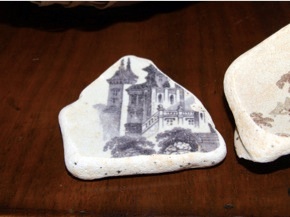
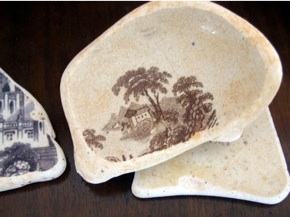
Using the facilities of the National Library of Ireland Terry Fortune and Mick Clancy endeavored to find out where the pottery originated and how it ended up on the beach at Rosslare Harbour. Although many local people knew of the pottery washing up on the beach, the name of the ship from which it came had vanished from local history. Terry and Mick’s first task was to visit local divers Andrew Walsh and his father Brendan Walsh who had recently located the wreck. However, this did not prove fruitful as the wreck had no identifiable features and could not be named.
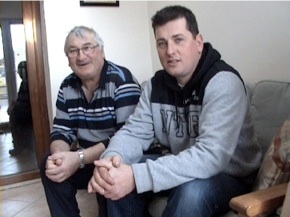
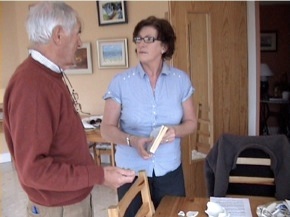
Realising the difficult task ahead, Mick and Terry set out two strands of investigation. The first involved identifying the production dates from a selection of the pieces, whilst the second saw them draw up an accurate list of local wrecks from the time of the pottery production. With the assistance of many local people including Margaret Hartigan, Micheal Delaney, Ann Borg, Brendan Walsh and Andrew Walsh they set about their research.
Fortuitously, Margaret Hartigan, who also runs a local B+B, recently had a Cornish guest stay with her. The guest, John E. Bussey from Newquay, turned out to be an expert in 18th Century porcelain which proved to be extremely beneficial to the research.
The Potteries
‘The Potteries’, centered around the town of Stoke-on-Trent, which was a major manufacturing area for ceramics since the 18th century. In a bid to protect copyright of ceramic design, in 1842 the Design Office in London introduced a registration mark which would clearly identify the maker, the period and the design of the ceramic. The mark was amended in 1868 but was discontinued in 1883. Using this mark Mick and Terry were able to identify several pieces from the beach, including a pattern entitled Spanish Festivities, registered by W. Adams & Sons of Tunstall on 30th November 1853. Other pieces which they identified originated from the kilns of W.T. Copeland of Stoke (26th Novemebr 1853) and John Ridgeway & Co of Shelton (2nd October 1847). By identifying these dates they hoped they could find the ship.
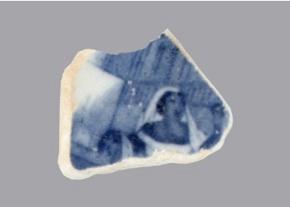
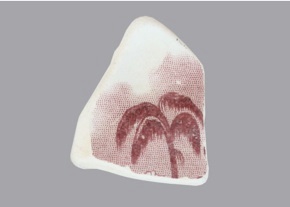


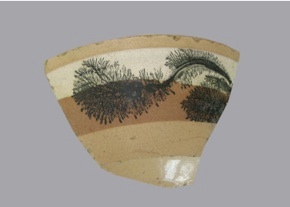
The Ships
The port of Liverpool was used to export Staffordshire ceramics during the 19th century and both steam and sailing ships were used. Ships set sail down the Irish Sea to the Atlantic coming close to the south-east coast of Wexford.
This area where the Atlantic funneled into the Irish Sea could see waves of huge heights and the sea off the coast of Wexford was the most dangerous for navigation in Ireland. Strong southwesterly gales were common. Sandbanks were shifted by extraordinary currents on the east coast and many rocks and reefs on the south between Greenore Point and Carnsore Point posed an enormous hazard for ships especially in the 19th century. This was combined with tide races of up to 6 knots and strong currents. On 7th February 1861 seven ships were wrecked on the Wexford coastline during a storm. It is little wonder that this coastline was called ‘the graveyard of a thousand ships’.
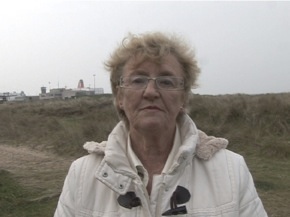
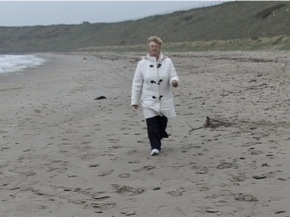

Terry and Mick compiled a list featuring hundreds of wrecks from around the dates of the pottery production. This process involved searching through the various books on shipwrecks from Wexford and Ireland as well as trawling The Shipping News from The Times Online. Using location, date and port of departure they decided that the sunk ship which was most likely to be the source of the pottery pieces was one of the following:
Chattanooche
Sailing Liverpool to Savannah
Sunk off Greenore Point on the 15th of February 1857
Elvira
Sailing Liverpool to Havana
Sunk off Greenore Point on the 6th of January 1856
Desert Flower
Sailing Liverpool to Calcutta
Sunk 3 miles South West of Greenore Point on the 4th of March 1864
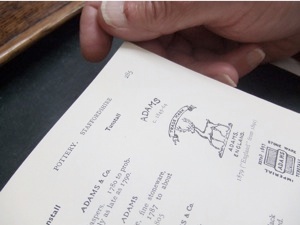
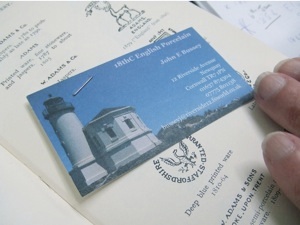
The objects on display in the National Library which relate to this project are:
Tales of the Wexford Coast by Richard Roche and Tom Williams
An Encyclopedia of British Pottery and Porcelain by Geoffrey A. Godden
Shipwrecks of the Irish Coast' Vol.3 by Edward J. Bourke
Postcard Image of Moran’s Bay, circa 1940.
Samples of Pottery from W. Adams and Sons
Facsimile of W. Adams and Sons Plate Design and Date of Registration Records
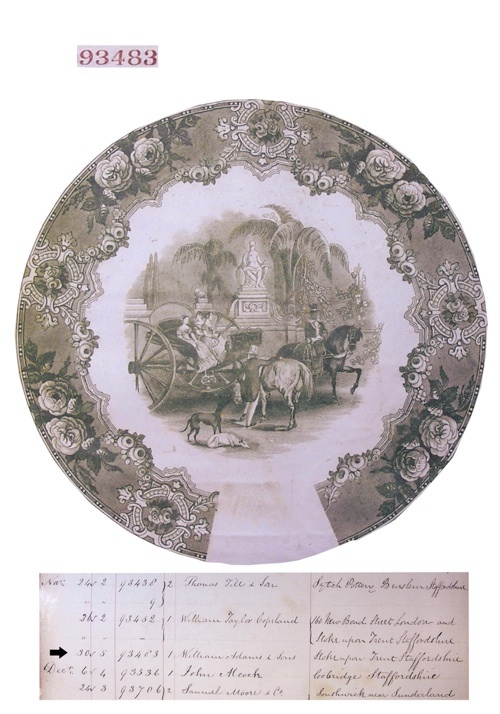
Books and records used by Mick and Terry for research include:
Tales of the Wexford Coast by Richard Roche and Tom Williams
Liverpool the Port and its Ships by Michael Stammers
An Encyclopedia of British Pottery and Porcelain by Geoffrey A. Godden
Shipwrecks of the Irish Coast' Vol.3 by Edward J. Bourke
A History of Shipwrecks and Disasters at Sea by Cyrus Redding
Dictionary of Disasters at Sea 1824-1962 by Charles Hocking
Wreck and rescue on the East Coast of Ireland by John de Courcy Ireland
Shipwreck Index of Ireland by Richard Larn
Collectors Handbook of Marks and Monograms on Pottery and Porcelain'. By William Chaffers
All above images are copyright protected by The National Library of Ireland and Michael Fortune.
Text by Michael Fortune


